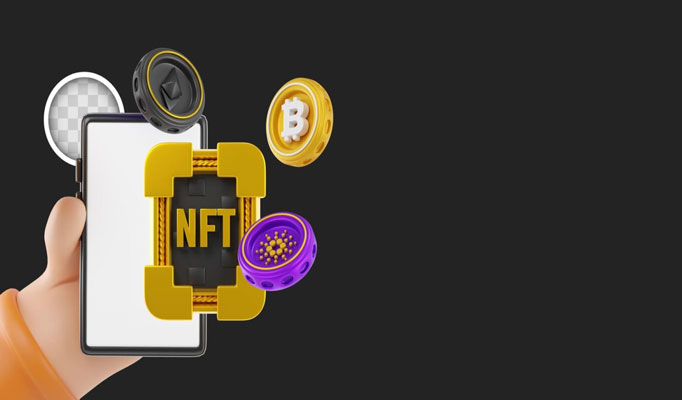Let’s take all the complexities associated with blockchain technology that require in-depth technical knowledge and merge them with the pleasure of gaming, which has long been a top pastime for many. The homogenization of cryptocurrencies and gaming has injected an extra layer of interest, engagement, and enjoyment for crypto enthusiasts and players, fostering a community of fun, trading, and earning. Many individuals who are generally caught up in discussions about Bitcoin, AI cryptocurrencies, Cardano price, and Donald Trump’s statement to make the United States the “crypto capital of the world” are now bonding with those who express a strong interest in gaming and its challenges, bridging the intricacies of blockchain technology with the thrill of interactive gaming.
Crypto games have existed since 2017, but it wasn’t until 2021 that they gained the interest and awareness of the video game industry and the general public. At the moment of writing, the Gaming (GameFi) market cap is $7.01B, with a 24h trading volume of $1,122,303,782 and a virtual protocol market cap dominance of $1,068,266,227.
How Does Crypto Gaming Work?
Crypto gaming generally operates through non-fungible tokens (NFTs) and cryptocurrency, harnessing blockchain’s decentralized nature to empower players with distinct features such as true asset ownership, real-money trading of in-game items, and unprecedented levels of transparency and security. With the constantly evolving nature of this innovative fusion, understanding the basics of crypto gaming becomes of paramount importance for both cryptocurrency enthusiasts and avid gamers alike.
The blockchain gaming ecosystem thrives through a combination of web2 and web3 technology, involving a concept of tokenization that includes blockchain-based certificates of ownership. The control shifts from gaming studios to players, allowing them to be in charge of their in-game items, avatars, and currencies while simultaneously establishing a dynamic player-driven game economy. For example, the popular “My Neighbor Alice” game uses a rewarding system that offers players the ALICE token when participating in events, which can be later used to buy in-game assets, avatars, and NFTs.
How Do Players Earn Assets?
To earn cryptocurrency tokens or NFTs, players are typically required to complete specific in-game tasks like winning battles and solving puzzles. Other ways to earn assets by playing crypto games include:
- Leveling Up Characters: Blockchain-based RPGs generally reward players with in-game items every time they level up, empowering them to mint the items as NFTs and sell them on the secondary market.
- Gamble With Cryptocurrency: Crypto gambling games function through a system that shares countless traits with traditional gambling games. The only aspect that sets them apart is the rewarding method, which uses cryptocurrency instead of fiat.
- Winning Crypto or NFTs for success: Play-to-earn games typically use specific success metrics to analyze players’ earnings, rewarding players with a pre-established number of cryptocurrency tokens each time they beat an opponent.
- Tournaments and Quests: Games like Splinterlands and Gods Unchained are widely known for their competitive tournaments with prize pools. These tournaments reward players who display strategic thinking and in-game skills with big prizes. Furthermore, tournaments serve as a unique opportunity for community engagement, empowering players to form alliances and build a recognizable game in the gaming industry.
What Are The Best Crypto Games To Play in 2025?
As an industry that sees constant innovative changes, the list of cryptocurrency games is frequently being refreshed with new and exciting titles, ensuring the future of blockchain gaming remains relevant and prosperous. Some of the very best crypto games include:
- Fantasy Pepe (FEPE) seamlessly blends football simulations, artificial intelligence, and tokenization rewards, aiming for an interactive and advanced blockchain platform. However, the virtual football league game has not yet been launched. Users can contribute to the development of Fantasy Pepe by purchasing a $FEPE native token at the Fantasy Pepe presale. Until then, players can watch the game, leave live commentary, and use $FEPE for predictions, with the winning position gaining more $FEPE tokens.
- Axie Infinity (AXS) has been a resounding success since the 2021 bull run when the AXS token reached its highest point at a $10 billion market cap, facilitating those who had long adopted it. In 2025, Axie Infinity remains amongst the most popular play-to-earn games, with a community of over 200,000 monthly active players. Axie Infinity produces two metaverse tokens: Axie Infinity Shards (AXS), which is a governance token that reinforces users to earn rewards, and Smooth Love Potion (SLP), which is gained through participating in Axie Infinity events and gameplay.
- Hamster Combat (HMSTR) brings vigorous, fast-paced animal duels to the screens. Players can earn rewards by participating in engaging battles, enhancing their hamsters’ ability to triumph in more intense fights. The HMSTR token welcomes numerous growth possibilities, displaying a beneficial in-game economy and staking rewards.
- My Neighbor Alice (ALICE) is an interactive blockchain-based multiplayer builder game with a whimsical land where anyone can buy land, own virtual islands, and build items while connecting with other users that generally turn into friends. My neighbour Alice’s marketplace displays NFT-based land, animals, distinct items, and numerous other assets, providing users with an exclusive and enriching environment to shop. The 100,000 units of land in the game are spread across six islands: Sandy Coast, Submerged Islands, Nature’s Rest, Lummestad (the town), Medieval Plains, and Snowflake Island.
Concluding Remarks
The fusion of traditional video games with cryptocurrency has attracted a mind-boggling amount of hype, generating billions of dollars from transactions involving NFTs. The appeal doesn’t come exclusively from the in-game excitement; it is also intrinsically connected with the tangible benefits that could lead to actual financial gains. Crypto games empower players to trade and monetize their in-game assets, fostering a new economy in which game assets count for real-world value.
Nevertheless, playing games that use blockchain technology gives you a viable way to earn money while you play. What could you possibly want more?










